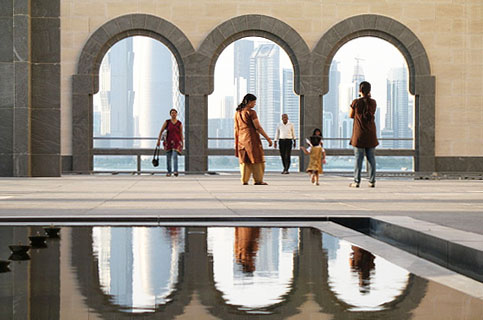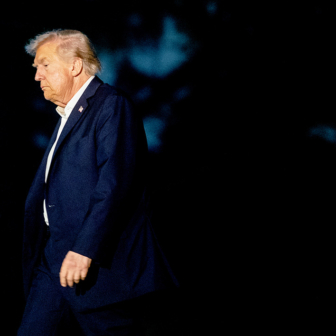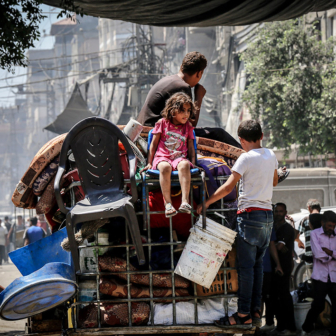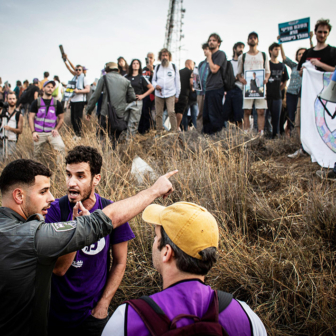IMAGINE waking one morning to the news that you will be given an instant pay rise of 60 per cent – 120 per cent if you are lucky enough to be a military officer. For those Qataris who work in the public sector – which is most of them – this was exactly what happened last September, when just such a proclamation was made, out of the blue, by the government.
Almost as quickly, locals began debating what had prompted such a pay hike. After all, as the country’s main employer, the government was taking on an astronomically larger wages bill because of the decision. Productivity was nowhere near high enough to justify such lavishness – in fact, it was not long since inflation had been a real worry for the country, running to double-digits for a couple of years in the late 2000s. Perhaps, some mused, the government was being truthful when it said that the rises were to offset cost-of-living rises over the past couple of years and help people lower their very high levels of household debt. But the timing and the manner of the announcement made that claim seem dubious to many people.
Instead, most people linked the announcement to the Arab Spring, the uprisings which had already claimed the political scalps of the leaders of Tunisia and Egypt and were about to claim the Libyan former leader’s life. Although Qatar’s royal family and political system are widely tolerated by Qataris, and indeed are quite popular in most quarters, the Arab Spring ought to have caused some nervousness. In neighbouring Bahrain the two centuries–old dynasty nearly fell after massive protests in February and March last year, surviving only through a combination of wily political tactics against the protesters and the deployment of friendly Saudi security forces. In Saudi Arabia itself, pockets of poverty, the prospects of Sunni radicalism, and an unhappy Shi’a minority made the monarchy there nervous as well.
Just as the Saudi leadership had promised some US$130 billion – yes, billion – in “gifts” to their population in February 2011, many Qataris assumed that their own 60 per cent pay rise, although arriving a few months later, was a gift from their own leaders in exchange for political compliance. For all of Qatar’s economic success in the past decade, coming as it did as an accompaniment to Qatar’s high profile and yet murky domestic politics, the pay rise was almost certainly some form of patronage.
QATAR has come a long way in recent years, and its economic development since the mid 1990s has been nothing short of spectacular. Twenty years ago, most people – even those who considered themselves quite well-travelled or knowledgeable about world affairs – would have had trouble rubbing together two facts about this tiny Arab state or even finding it on a map. A great many still would. Despite the popularity of Qatar’s Al Jazeera television, and then its successful bid to host the 2022 soccer World Cup, it is a small Arab Gulf state that few know much about and fewer still have visited. At 11,586 square kilometres it is considerably smaller than East Timor or Fiji, and its population of about 1.7 million are mostly foreign workers – only perhaps 300,000 are Qatari citizens.
But Qatar is now, by most measures, the wealthiest country in the world per person; its nominal GDP is just under US$100,000 per person, but per citizen the figure is several times higher. Its total GDP, at about $110 billion in 2010, was about one-tenth that figure when the current emir, Hamad bin Khalifa Al Thani, took power in 1995. Qatar’s wealth has been built on its gas reserves, which are among the largest in the world: its North Field, which it shares with Iran (where the field is known as South Pars), is the single biggest reserve in the world, holding about 13 per cent of the world’s proven gas reserves just on the Qatari side.
The physical look of Qatar has changed greatly too. A visitor to the capital, Doha, in the 1980s would have thought the place to be quiet and only modestly developed. While by no means poor back then, it was a backwater among Gulf states and nowhere near the present-day city of high-rises, shopping malls, urban developments and cultural attractions. As recently as a decade ago, the capital had only one modern shopping mall, basic sports facilities, and decent but no-frills infrastructure. Now, it’s on a building spree, constructing new hotels, residential complexes, shopping centres and major assets including a new airport and educational institutions. After hosting the 2006 Asian Games, Doha can boast world-class sporting venues, but even these are slated for redevelopment before the World Cup teams arrive a decade from now.
PERHAPS the most interesting change since the mid 1990s is in the style and ambitions of Qatar’s government. Where the previous emir was cautious, reserved and keen to keep Qatar’s large neighbour Saudi Arabia happy, Hamad has been an activist force for change, turning Qatar into one of the most high-profile states in the Arab world.
First, it is an economic trendsetter. Of course, it is normal for governments in the Gulf to make much of their wealth from oil and gas sales, and to use this money to both repress and co-opt citizens – in effect, to buy legitimacy or at least toleration. With its bold plans for economic diversification, new infrastructure and the education of the population, Qatar’s government is different. It is a little like Dubai in terms of its energy and vision, but – unlike Dubai – its vision is backed by hydrocarbon wealth.
Problems do exist with these plans. Qatar’s economic diversification is still in many ways subsidised by oil and gas revenue. Despite massive improvements in education, a rapidly rising number of young people are entering the labour market, often poorly prepared for most jobs and willing only to accept the more prestigious and secure ones. Still, Qatar is one of the few states that has enormous energy wealth and is nonetheless trying seriously to diversify its economy and build the basis for a more global and competitive economy.
To this end, it has made several strides. It has reformed education, both in primary and secondary schooling and especially in the higher education sector. Qatar University, the flagship institution, was dramatically reformed in the early and mid 2000s. At around the same time, Education City was established in the suburbs of Doha as part of a bid to persuade the best universities in the world to set up campuses in Qatar. Texas A&M is there teaching and researching on engineering; Cornell University runs the medical program; Georgetown runs courses in affairs and diplomacy. There are many others, among them Carnegie Mellon University, Northwestern, and one of France’s grandes écoles, HEC Paris.
Beyond education, Qatar has cleverly leveraged as much wealth as possible from energy – through joint ventures with firms and the state-sponsored creation of key firms along the oil and gas supply chain – and also by developing world-class firms in other areas. Qatar Airways has very quickly become a global airline, while several Qatari banks, construction firms and transportation companies rank among the largest in the Gulf. It has done this, it must be stressed, in the pattern of what the political scientist Ian Bremmer calls “the new state capitalism”; Qatar is not an experiment in economic liberalism, even if it has made some market reforms. Instead, it has supported national “champions” – the mostly state-owned or heavily regulated and state-supported companies that are pushed to be efficient and profitable but also have near-monopolies or other advantages. It is a new and growing approach to development and diversification, but one which so far is showing considerable promise.
A second feature of Hamad’s Qatar is how uniquely and aggressively the country is “branded” to the world. Again, this has been a deliberate strategy of the emir. It began, most observers would argue, with the creation in 1996 of Al Jazeera, a trend-setting satellite television channel which, almost alone, transformed broadcasting and new media in the Arab world. The staid, distorted, state-owned media of the past has given ground – indeed, is almost extinct – in the face of Al Jazeera’s blend of informative and entertaining media and current affairs. The network has done wonders for Qatar’s image in the Islamic world, even if the glare of its journalistic gaze rarely pierces Qatar’s politics.
More recently, Qatar has branded itself as a modern, cosmopolitan and liberal state. By hosting major events such as the 2006 Asian Games and now the 2022 World Cup – and hoping to add a summer Olympics to the schedule too – the country is creating a global image way out of proportion to its size. Such events link to its plans for economic diversification, feeding as they do sectors such as aviation, tourism, construction and the media.
Finally, Qatar under Hamad has become a diplomatic leader in the Arab world. It was the only Gulf state to establish links with Israel during the Israeli–Palestinian peace process in the 1990s. It has been active in peacemaking in Lebanon and at the United Nations as a non-permanent member of the Security Council in 2006–07.
More recent has been Qatar’s military role in supporting the anti-Gaddafi revolution in Libya. It has given vocal support to the anti-Bashar opposition in Syria, including a call in mid January for foreign military intervention – the first Arab state to do so. Its military commitment to Libya was not just a token effort: it contributed around half of its entire air force capability to the NATO-led air operation, and accounts are starting to emerge of the on-the-ground special forces role Qatar played in support of the opposition.
IF ALL of this makes Qatar’s rise seem too good to be true, perhaps that will prove to be the case. There are many panegyrics to Qatar in the media, and the country markets itself very slickly, but impressive as its economic transformation and global political role have been, the changes since the late 1990s are not without a catch or two.
Perhaps the starkest observation to be made about Qatar is that there has been little political change or democratisation. Some see this as reason for Qatar’s progressiveness in other areas: economic change being the means by which the regime buys support from its constituency, and its diplomatic activism being a deflection of attention from its own very limited political reforms.
There is, perhaps, some truth to such claims. Certainly, thus far Hamad and the regime have been very successful in avoiding criticism or calls for democratisation from the United States, although this could just as easily reflect how effectively it has built up its diplomatic and military links with Washington. Qatar’s new constitution, which was endorsed by referendum in 2004, called for the creation of a popularly elected parliament. For a long time the emir seemed to be delaying this reform, which would have been a more significant step towards democratisation, even though the parliament’s powers under the constitution are limited. It was only late last year – again, many assume, as a result of the Arab Spring happening around him – that the emir finally announced that the long-anticipated polls would take place in 2013.
Regardless of this foot-dragging, the fact remains that there is a strong level of support for the emir – not least of all for the active global role he has created for Qatar – and there is little interest by most Qataris in challenging his dominance of politics. Perhaps that is to be expected in an environment where 60 per cent pay rises occur overnight, but there is also a genuine belief that the country is changing, overall, for the better. Qataris I met during a recent visit spoke positively about the image their country now has abroad, and seemed to relish the fact that Qatar had as much name recognition and “soft power” as much larger neighbours such as Saudi Arabia and the United Arab Emirates. If there were complaints, they were mostly about the pace of change; and among younger Qataris there was frustration at the strong hierarchies that remain in society and in major companies and public service agencies. Few saw such things as a failing of the emir, however.
There are occasional political complications, of course. In early 2011, according to local rumours, a coup attempt – the second in a few months – had to be violently, if discreetly, suppressed. By most accounts it involved a group opening fire on the emir’s palace, a normally graceful building in a fairly serene city. But this was not a popular uprising or anything like it; in fact, Qatar has had none of the Arab Spring protests that most countries in the region have witnessed in the past year or so. If the coup even occurred, it reflected elite discord and, in particular, sharp divisions within the large royal family itself.
As it builds and expands its economy, if it truly wants to diversify and develop at both a social and an economic level, other problems will have to be overcome. Women are a woefully underutilised resource, and still face considerable social pressures to put family and domestic roles ahead of their careers. But women are also some two-thirds of university graduates, and by many accounts they are generally more reliable and diligent employees than their male counterparts. So not to welcome them into the workforce is costing Qatar dearly.
Similarly, there is a concern that although Qatar is educating many more of its young people, it is not preparing them very well for working life. Few want to work in the more demanding or less prestigious areas of the economy – as tradespeople, technicians and the like – and, perhaps because of the country’s enormous wealth, there is an expectation of good, low-stress jobs among many Qataris. This occurs elsewhere, of course: in Saudi Arabia it’s sometimes called the “mudir (manager) syndrome.” Even in Australia, it could be argued that too many young people flock to universities while there is a shortage of labour in trades because of the prestige attached to the professions. This is why Qatar has such an enormous population of “guest” workers: about 1.3 million people, the majority of them South Asian, work in poor conditions and for very modest wages (if still attractive enough to entice them to come and work in Qatar). Critics are quick to point out, however, that foreign workers enjoy few rights, and even wealthier Western expatriates will acknowledge that their Qatari sponsor has most of the power in the relationship.
Many Qataris believe that Qatar has too many foreign workers, and local people ought to be trained to take over the roles they occupy. But for as long as most Qataris lack a sense of competitiveness and are unwilling to take on many (of the most in-demand) roles, and foreign workers remain preferred by employers, plans to nationalise (“Qatarise”) the workforce and build a globally competitive, diversified economy are likely to fail.
IN DOHA, the Qataris I met gave me what seemed like contrasting, even clashing, perspectives. They appeared to agree about where the country is headed, and to support the emir’s vision of a wealthy, cosmopolitan, ly active country, yet they disagreed about whether it is going about this transition effectively and smoothly. For many older Qataris, reform is alluring but dangerous, something to be done cautiously, with economic change setting the pace and social change happening only very, very slowly. For younger Qataris, however, this very idea is the problem with the current reforms. They felt as though changes in the economic arena were having little impact in their daily lives, while the more conservative or traditional forces continued to restrain them socially and in their careers. Young people, men and women alike, often feel as if there is an underlying conflict between the need for development and the unwillingness of older Qataris to allow change.
If there is a failing in Qatar’s development approach, then perhaps this is it. It is a very conservative society being transformed rapidly in many ways. Its economy, the face of its cities, and the size and composition of its expatriate workforce have all changed beyond recognition in just a decade or so. Yet in other ways too little is changing. There are frustratingly few opportunities for young people in the social and political realm, constraints still on women, and only haphazard and cautious changes in many of the institutions and social structures that guide everyday life. This is the real challenge of development: not just to use gas wealth wisely while moving gradually but successfully to a sustainable economic base, but also to manage all of the social and cultural demands that go with such change. Although the emir has handled all this quite aptly so far, it is a long-term challenge, much of which remains incomplete. •




